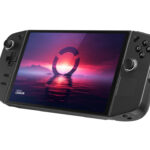
The distinguishing factor between a smartphone and tablet is diminishing by the day. While smartphone screen sizes are increasing with every subsequent release, tablets in every size, try to offer data and voice calling functionality. Sitting in the same spot is Asus’ Fonepad 7, which is essentially a tablet but supports voice calling functionality. But is it any good? We take a look.

The Fonepad 7 borrows some looks from its predecessor that features dual-front speakers on the front and a big bezel surrounding the 7-inch display. The sides of the device are covered with the power, volume buttons, microSD card slot, microUSB port, microSIM card slot and 3.5mm headphone jack. One major change in the design department is the back, which now features a textured design. The design at the back is all well and good but the fact that it’s glossy and attracts fingerprints, you’ll find trying to wipe the back more often than you’d like.

Fonepad 7 is one of the few tablets that you’ll see powered by an Intel processor. To be precise, the Fonepad 7 features a 1.6GHz dual-core Intel Atom Z2560 processor. And before we start a debate on how dual-cores are passé for an Android device, I would like to point out that Fonepad 7 with a dual-core CPU onboard and 1GB RAM, it performs really well. Regular usage was good and so was handling of graphics intensive games and some processing-centric apps.

The display on the front is 7-inch and supports a resolution of 1280×800 pixels. It has an IPS panel that ensures good viewing angle along with improved colour reproduction.

On the camera front, the Fonepad 7 boasts two camera – a 5MP with autofocus at the back and a 1.2MP facing on the front. The camera quality is mediocre, to be honest but then you don’t really expect an excellent snapper on a tablet. Asus manages to spruce up the camera with burst shots functionality (up to 100 images) as well as various filters and camera modes. Main camera supports full HD 1080p video recording while the front is capable of 720p.

Software-wise, the tablet runs Android Jelly Bean and features a customised user interface from Asus. Good thing about the customisation is that the change is minimal and doesn’t really hamper the ‘stock’ Android user experience. Asus also pre-loads some of apps like the Parental Lock, App Lock, App Backup, AOLink, Asus Story and even comes with floating apps that overlays above the main running application, thus improving multitasking.

Although I’m not a big fan of talking on a tablet but given the fact that many do, there’s definitely a market and for the crowd that worries about call quality, I’m happy to report that the call quality on the Asus Fonepad 7 is top notch. It boasts a 3950mAh battery that promises a talk time of up to 28 hours on 3G and up to 10 hours of battery life for regular usage. In our tests, we would easily get around almost a day’s use from a mix 3G data, Wi-Fi, music, video and bit of gaming.
Asus developed the Fonepad series with a target market in mind. The said market want a big enough screen to qualify as a tablet and even get in voice calling to use as a backup device or even replace their existing smartphones. Admittedly, Samsung and some Indian manufacturers in a similar size can do all the things that Asus’ offering can but Fonepad 7 is a better choice due to its optimisation, stable performance and good battery life.
The Fonepad 7 retails around Rs. 14,000.





Leave a Reply